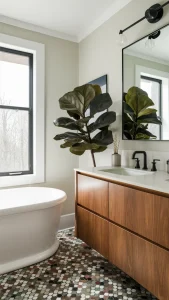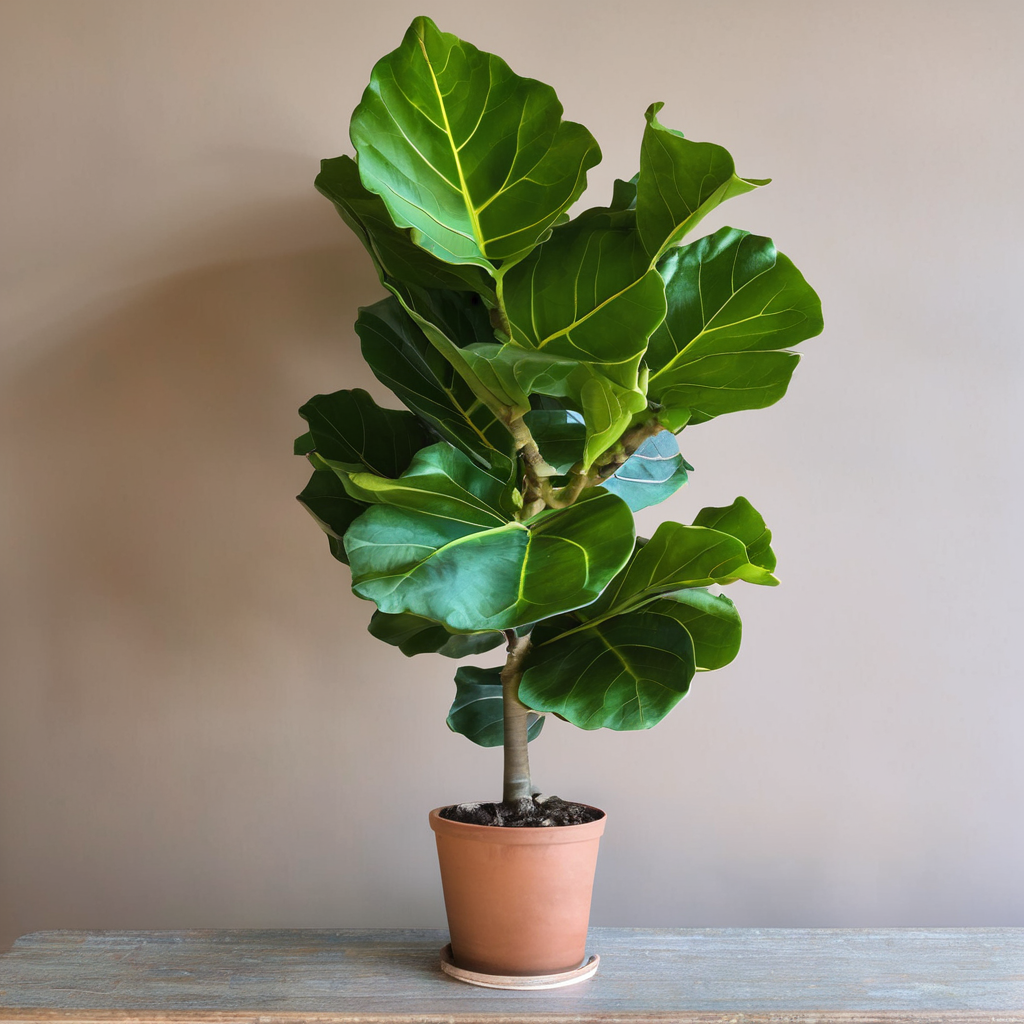With their tall, slender trunks capped with large, glossy leaves, Fiddle Leaf Figs have a statuesque presence that elevates any indoor space. Though tropical in nature, these fashionable foliage plants have become a decor favorite in modern homes.
Despite their dramatic looks, Fiddle Leaf Figs are not always the easiest houseplants to care for. However, with the right growing conditions and care practices, they will thrive for years to come.
Fiddle Leaf Fig: A Tropical Showstopper For Your Home
In this guide, I’ll share everything you need to know to pot and care for your new Fiddle Leaf Fig so it rewards you with its beauty.
Choosing a Pot
Fiddle Leaf Figs appreciate pots with good drainage to prevent root issues. Look for a plastic or glazed ceramic container with holes in the bottom around 10–12 inches wide to accommodate their large root balls.
Terra cotta is also a great option, as it allows moisture to evaporate through the unglazed sides. Use a well-draining, organic potting mix formulated for houseplants. I recommend FoxFarm Ocean Forest Potting Soil.
Potting Your Fiddle Leaf Fig
Carefully remove the plant from its nursery pot and loosen any circling or tightly-packed roots. Add a thin layer of potting mix to the new container.
Nestle the root ball in the center and fill around the sides with more soil, packing it down gently. Leave 1-2 inches between the soil and pot rim. Water thoroughly until it drains out.
Light and Temperature
Fiddle Leaf Figs thrive in medium-to-bright, indirect sunlight. An east- or west-facing window provides the perfect growing conditions. They tolerate low indoor light if supplemented with weekly doses of direct sun.
Just be sure to avoid hot sun, which can scorch leaves. Figs prefer warm temperatures between 70 and 80 °F. They’ll let you know if it’s too cold by dropping leaves. Provide humidity with pebble trays or humidifiers.

Water and Humidity
Allow the top inch of soil to dry out between waterings, then water thoroughly until it drains from the bottom. During the growing season, water every 7–10 days.
Cut back to every 2-3 weeks in winter when growth slows. Figs appreciate high humidity levels around 50%. Mist leaves often or use pebble trays/humidifiers to keep them happy. Avoid cold drafts near vents or windows.
Fertilizing Your Fiddle Leaf Fig
Feed your plant every 2–4 weeks during the spring and summer with a diluted liquid houseplant fertilizer. I recommend a ratio of 1/4 the strength listed.
Apply to the soil and water it in well. Cut back fertilizer to just a few times during fall and winter. Figs are not heavy feeders when grown indoors. Too much can cause burnt leaf tips.
Pruning and Propagation
Prune off any leaves or stems that look unhealthy to maintain an attractive appearance. Fiddle Leaf Figs can also be propagated from stem cuttings. Simply remove 4-6 inch sections and root in water or moist soil.
Pests and Problems
Watch for occasional issues like spider mites, which can be treated with neem oil or insecticidal soap. Underwatering shows in drooping leaves that perk back up with water. Provide the right conditions to keep your Fig thriving for years.
With basic care, your Fiddle Leaf Fig will reward you with its statuesque presence and air-purifying abilities indoors. Let me know if you have any other questions!
Related Articles
